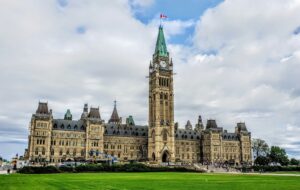In 2024, Canada is expected to welcome more than 500,000 new immigrants, breaking the previous year’s record. With rapid growth across all provinces, Ontario leads the country in new arrivals.

Forecasts suggest that 2024 will be a record-breaking year for Canada, as the nation may welcome over 500,000 new permanent citizens. This would be more than the immigration target of 485,000 for 2024 as well as the previous record of 471,815 set in 2023. Immigration, Refugees and Citizenship Canada (IRCC) has released its June data, which indicates a 4.9% decline in new permanent residents, or 44,540, compared to previous months.
The overall trend for the year is still good despite this recent dip. By the end of 2024, Canada may have 511,410 new permanent residents if the present immigration rate is maintained. This demonstrates Canada’s ongoing commitment to high immigration rates and reflects an 8.4% rise over the prior year.
With over 41.6% of all new permanent residents entering the province in the first half of the year, Ontario continues to be the most sought-after destination for immigrants. This illustrates the province’s prominent position in Canada’s immigration scene, which is bolstered by a number of economic initiatives, including the Canadian Experience Class (CEC), the Ontario Immigrant Nominee Program (OINP), and other federal and local immigration routes.
Notable increases in immigration were also observed in other provinces. Significant numbers of new residents were drawn to Quebec and Alberta, which aided in the total increase. A total of 106,500 new immigrants arrived in Ontario, 30,315 in Quebec, and 34,375 in Alberta. The Atlantic provinces, which include Newfoundland and Labrador, saw moderate increases in immigration in June. The province saw a 3.7% increase in immigration, while Quebec and Ontario also saw slight increases.
Canada has a two-tiered immigration system that includes provincial nominee programs (PNP) in each of its 10 provinces and federal programs such as the Federal Skilled Worker (FSW), Federal Skilled Trades (FST), and Canadian Experience Class (CEC). Numerous routes are available for people to get permanent status under this dual system.
Apart from the noteworthy influx of immigrants, it is anticipated that the federal government would tackle the issue of temporary immigration, which experienced a sharp increase during the epidemic. The impending immigration levels plan, which is scheduled for release in September, is expected to include modifications to the management of temporary resident levels, according to Immigration Minister Marc Miller.
All things considered, Canada’s dedication to high immigration levels continues to influence its demographic makeup, fostering both cultural diversity and economic expansion.


Leave a Reply